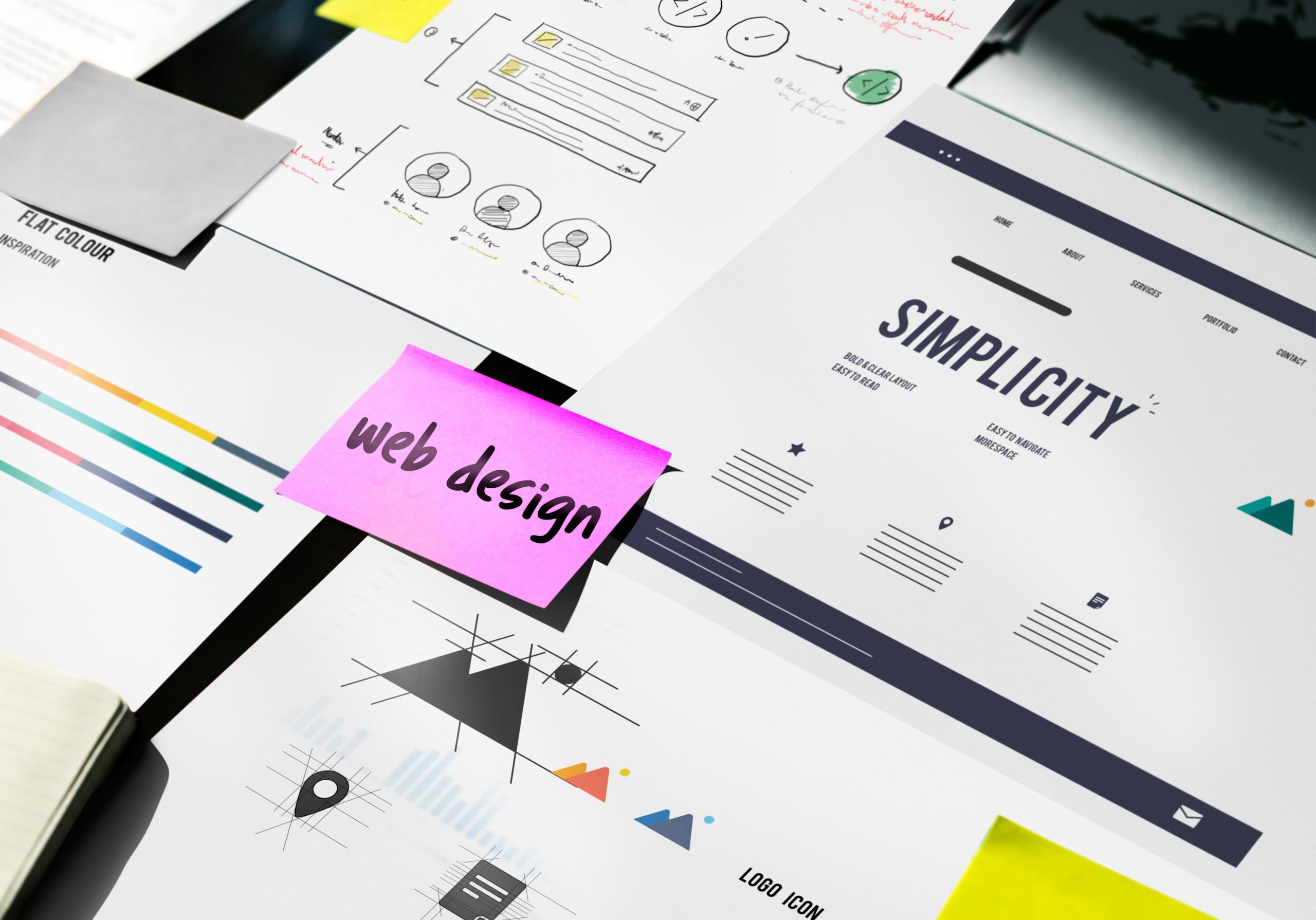Late on a Thursday night, two weeks before an election, a local volunteer was checking her phone in the grocery store parking lot. She wanted to look up a candidate she’d heard mentioned at a town hall. She clicked the link in a friend’s post and waited. Three seconds passed. Four. Then the page crashed. She sighed, locked her phone, and pushed her cart toward her car. That vote was gone.
That’s the reality of modern politics. A slow or poorly designed campaign website doesn’t just hurt your political image. It can cost you real support. And with attention spans shorter than ever, a voter’s first experience with your digital brand needs to be immediate, clear, and persuasive.
A well-built political campaign website should not be an afterthought project. It should be the main focus, especially if you will be using it for donations, volunteer sign-ups, and reputation messaging.
A strong web design and development approach gives you
- Complete control over your message. Unlike social media, you own your platform.
- A 24/7 campaign representative. Your site works while you sleep.
- Integrated donation systems. Direct, secure, and trackable fundraising payment access.
- Better search visibility. Good SEO helps voters find you on Google before your opponent.
- A data-gathering tool. Collect emails, track engagement, and see which policies resonate.
Reach Voters builds campaign websites with all of these factors in mind, combining custom web development, UX design, and digital marketing services to give your political brand an edge.
 Picking the Right Web Development Company
Picking the Right Web Development Company
Not all web development companies operate the same way. The methods, priorities, and tools they use vary depending on the industries they serve. Political campaigns have different technical, legal, and messaging requirements compared to retail stores or corporate brands. And if a developer doesn’t understand those differences, you might spend more time fixing mistakes than winning votes.
Here’s what to verify before hiring:
1. Political Campaign Experience
- Compliance knowledge matters: U.S. political campaigns must follow strict fundraising and data-handling rules. For example, the Federal Election Commission (FEC) sets donation limits and reporting requirements. A developer who’s worked on campaigns will know how to structure forms and databases so they stay compliant.
- Fundraising integration: Campaign-focused developers can connect your site to tools like ActBlue, WinRed, or NationBuilder without breaking donation reporting workflows.
- Campaign urgency: Election timelines are non-negotiable. An experienced developer understands that “six weeks late” means “pointless.” They plan for compressed schedules.
2. Responsive Design Skills
As of 2024, over 55% of all web traffic in the U.S. comes from mobile devices. For political sites, this number can be even higher because voters check links on social media via their phones. It’s not enough to “look okay” on mobile.
The site should be tested on multiple screen sizes (from older iPhones to large Android devices) to make sure navigation and donation forms work smoothly. The Buttons must be large enough for thumbs, and the text should be readable without zooming.
3. Integration Capabilities
Your website function should feed sign-up forms directly into a campaign database or CRM (like NGP VAN or Ecanvasser) without requiring manual data entry. Also, it should have the ability to update events in one place and have them automatically appear on the site, in emails, and on social media, which saves hours of admin work.
Payment processors must be PCI-compliant and handle both one-time and recurring donations. Integration errors here can result in lost revenue and legal trouble.
4. Speed and Security
Google recommends that political and nonprofit websites load in under three seconds. Every additional second can reduce conversions by up to 20%. Campaign sites can go from a few hundred visitors to tens of thousands in minutes after a media appearance. The hosting environment should use scalable infrastructure (e.g., cloud hosting with load balancing) to prevent crashes.
Political websites are frequent targets for hacking attempts, defacement, and DDoS attacks. Essential protections include SSL certificates, two-factor authentication for admin accounts, daily backups, and a content delivery network (CDN) for added resilience.
Set Clear Digital Campaign Goals
Before you start the design process, you need clarity on your campaign’s objectives.
Ask yourself:
- Do I want my site to focus on educating voters, raising funds, recruiting volunteers, or all three?
- Am I building a single election-focused site or a long-term political platform?
- How will the site connect to my broader digital marketing strategy?
Your answers will help a web design agency create a tailored digital plan. For example, if fundraising is your main priority, you will need a development company that excels at custom web solutions for secure, user-friendly donations.
Also, your website shouldn’t exist in isolation. It needs to fit into a coordinated plan involving email marketing, social media, paid ads, and in-person events. If you’re running Google Ads or Facebook Ads, dedicated landing pages can improve conversion rates by up to 35% compared to sending traffic to a generic homepage.
Avoid vague campaign goals such as “increase awareness.” Instead, track:
- Number of new volunteer sign-ups per week
- Average donation amount and total raised
- Bounce rate (percentage of visitors who leave without clicking anything)
- Time on site per visitor
Having specific numbers lets you and your web design agency measure success and adjust strategy.
Build A Voter-Friendly Website Structure
Great web design focuses on navigation that makes sense. A political campaign site should almost always include:
- Home Page: A clear message, strong photo or video, and a bold call to action like “Join Us” or “Donate Now”.
- About Page: Your story, values, and qualifications. Keep it personal but professional.
- Issues Page: Short summaries for quick reading, with links to more detailed policy statements.
- Get Involved: Volunteer sign-up and event RSVPs.
- Donate Page: Secure, quick payment forms that work on mobile.
- Events Page: Rally dates, town halls, and community gatherings.
- Contact Page: Multiple ways to reach your team.
If you decide to work with Reach Voters, you will get a design and web development plan that optimizes these pages for both clarity and conversions.
 Follow an Efficient Development Process
Follow an Efficient Development Process
A political campaign website isn’t something you can “figure out as you go.” Election timelines are fixed, and a single missed deadline can mean missing a debate, media opportunity, or voter outreach push. That’s why having a clear, repeatable design and development process is critical. It keeps everyone aligned, minimizes errors, and ensures your site is ready when voters are looking for it most.
At Reach Voters, we use a structured workflow built for speed, accuracy, and campaign-specific needs. Each stage has a defined output, so the project never stalls.
Consult — Establish the Mission and Requirements
This isn’t just a casual chat. It’s where we confirm the core purpose of the website. Fundraising, voter education, volunteer recruitment, or a combination. We also identify any compliance requirements.
For example, U.S. federal and state election laws may dictate what donor information you must collect and how it’s stored. A campaign timeline is set, with key milestones leading up to launch day, so there’s no guesswork later.
Plan — Build a Detailed Roadmap
This phase includes site architecture mapping (also called a sitemap) so everyone knows exactly which pages will exist and how they connect. We select the right technology stack early.
- WordPress with secure political fundraising plugins for content-driven sites
- Custom frameworks like Laravel or Django for campaigns needing more advanced features, such as voter lookup tools or real-time results pages
- Hosting, scalability, and security measures are determined before any code is written.
The design stage isn’t just about making the site look “nice.” We focus on user experience (UX) to guide visitors toward actions like donating or signing up. Branding elements (colors, typography, logo placement) are aligned with the campaign’s offline materials so there’s consistency across print, digital, and social media. Accessibility is checked at this stage, following WCAG 2.1 guidelines, so the site is usable by voters with disabilities.
Develop — Build the Site with Front-End and Back-End Precision
Front-end development covers everything a visitor sees: navigation menus, buttons, page layouts, and animations. Back-end development ensures all the functional systems (databases, payment processors, CRM connections) work together securely and efficiently.
For campaigns, this often includes:
- Integrating volunteer forms with voter databases
- Embedding donation processors like ActBlue or WinRed
- Setting up automated email responses for sign-ups
We run cross-browser testing to ensure the site works on Chrome, Firefox, Safari, and Edge, plus mobile browsers. Load testing simulates high-traffic scenarios to ensure the site won’t crash after a news mention or debate night. We also conduct security testing to identify vulnerabilities before launch, including testing form submissions to prevent spam or data leaks.
Analytics tracking (Google Analytics, Meta Pixel) is activated immediately to start collecting data on traffic and conversions. We keep monitoring tools active for uptime alerts, and automated backups are scheduled daily so the site can be restored quickly if needed.
A post-launch support window ensures urgent changes (like adding a new event or correcting a bio detail) can be made without delays.
Lock Down Security and Compliance
Campaign sites are prime targets for cyberattacks and must follow strict legal rules for donations.
Security measures:
- SSL Encryption on all pages and not just the donation form.
- Two-Factor Authentication for anyone with admin access.
- Daily Backups are stored off-site for quick restoration if hacked.
Compliance measures:
- Follow Federal Election Commission (FEC) rules for donation reporting.
- Display disclaimers on fundraising pages (e.g., “Paid for by [Campaign Name]”).
- Store donor information securely, following state-specific privacy laws.
To differentiate your campaign online, consider custom design elements like
- Video banners of rallies or speeches.
- Interactive maps of voting locations.
- Real-time donation trackers.
- Embedded live social feeds.
These extras give your site personality while enhancing voter engagement.
Why Reach Voters Is the Right Choice
At Reach Voters, we’re more than a web development and design company. We’re a full-service digital partner for political campaigns.
We provide:
- Custom software development for political tools.
- Digital transformation services that keep campaigns ahead of tech trends.
- Web application development for volunteer management and event sign-ups.
- Design and digital marketing to boost engagement.
- Tailored digital strategies for winning campaigns.
A political campaign website is more than pixels and code. It’s the story you tell, the trust you build, and the action you inspire that are all wrapped into one modern digital platform.
If you’re looking for a web development company that understands the urgency, the stakes, and the strategy behind political websites, the Reach Voters team can help you design and develop a site that doesn’t just look good but gets results.

 Picking the Right Web Development Company
Picking the Right Web Development Company Follow an Efficient Development Process
Follow an Efficient Development Process

